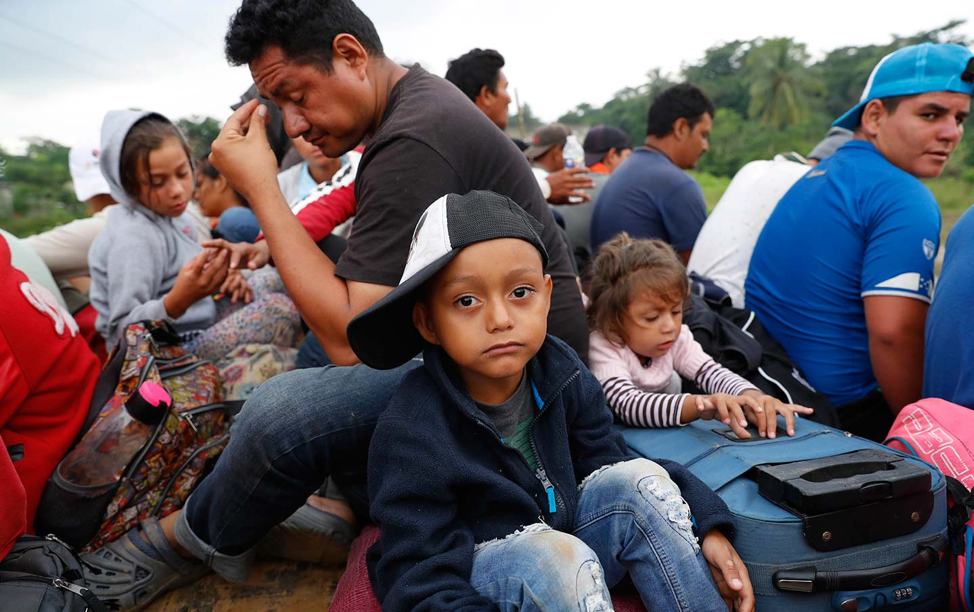
The number of Central American families seeking refuge in the US has greatly risen in the last few years.
An underclass of “undocumented” workers in the U.S., sweatshops in Asia, child miners in Africa, contract ironworkers in Dubai … we live in a world of globalized labor exploitation. This doesn’t just mean a world where workers in many countries suffer exploitation; it means a world in which labor is kept artificially divided and controlled by a regime of nation-state boundaries. If the problem of the twentieth century was the problem of the color line, the problem of the twenty-first century will be the problem of the borderline as the mechanism of human repression.
This global caste system is the new “prison house of nations,” although we don’t all feel the prison bars. A few, like many here in Champaign-Urbana, can soar across borders for career, education and vacation, or stay at home and enjoy food, clothing, and goods produced by others’ labor, but most of the world remains bound by an international economic system that allows produce to travel, but not the producers. This makes it easy to forget that it’s the absence of decent wages, environmental oversight, or social safety nets at the production end that makes things affordable at our end. We may come into contact with the victims of labor exploitation through travel, sporadic brand campaigns, or heart-wrenching profiles of child laborers, but we think of these horrors as anachronisms to be corrected by individual companies or countries, not symptoms of a global pyramid scheme.
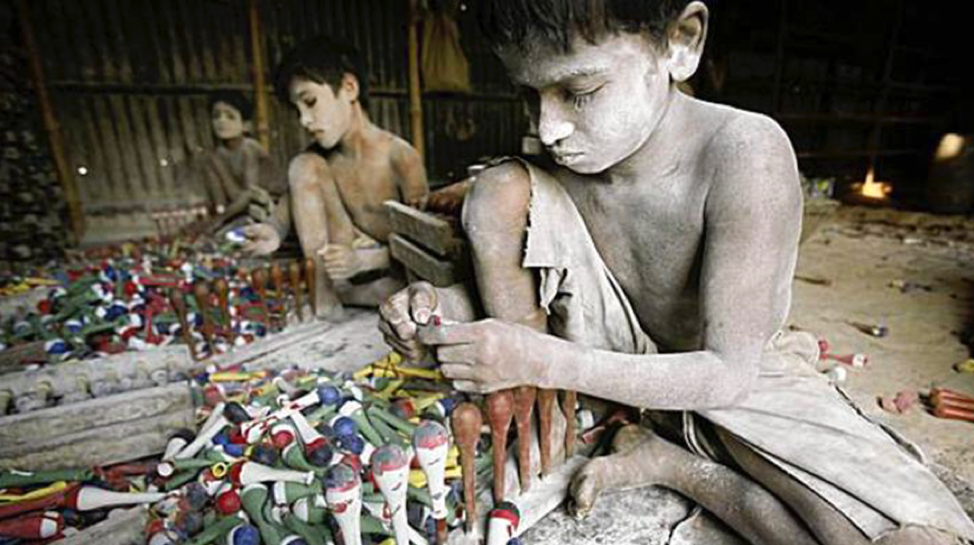
Child labor is an ongoing and intrinsic aspect of the global labor system even today.
It’s becoming harder to ignore the true price of our comfortable life. In our more visually interconnected world even victims have access to the tools to post their experiences online, and the same tools help access information on paths to escape. Recent migrant caravans in the Americas and refugee flotillas across the Mediterranean were spurred by civil strife, but they have become the underground railroad of our era. Flight alone won’t solve global labor exploitation, but it’s cracking this system that allows companies, products, capital, and consumers to move freely, but holds labor behind barbed wire.
Underground and Contract Labor as the New Apartheid
The contortions necessary to adapt the nation-state labor regime to new circumstances are often ugly. One example can be found in the oil economies of the Persian Gulf States, which don’t have the human resources needed to build the skyscrapers and soccer stadiums they can fund. In the 19th century, states would have met labor demand by encouraging immigration (allowing arrivals to access the collective goods of the state) or by buying humans (using racial theory to justify classifying some labor as inadmissible to rights). Today’s contract labor system revives the bonds of slavery but justifies it through the color of one’s passport, not one’s skin.
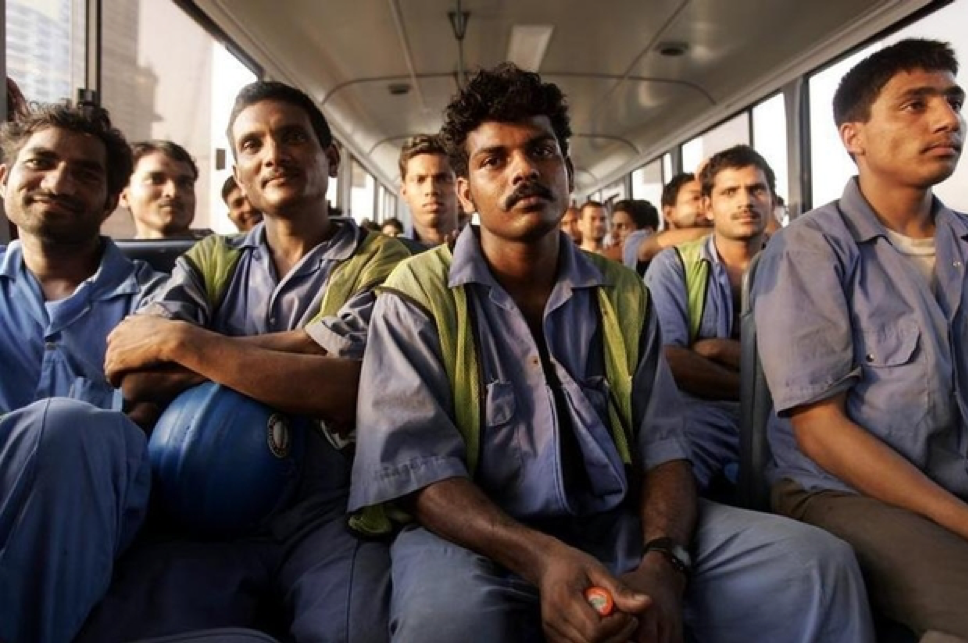
The gleaming skyscrapers of Dubai and other Gulf countries are built with migrant laborers, who make up 75 percent of the residents in the region but have no rights. They hand over their passport to their contractor upon arrival and cannot leave the country without it.
According to the International Labour Organization, ten percent of all global migrants can be found in the Gulf States, where they make up between 50 and 90 percent of the residents. Workers, primarily male, arrive after paying fees to “sponsors,” who control who they work for and whether or not they can change jobs or leave. For three to six years they live in group housing that might provide only one bathroom or kitchen for 50-100 men, and if they show the slightest sign of protesting their conditions they will find themselves in prison or deported. The system for the employer is an improvement over slavery in that it is the sending country that bears the cost of educating the young and caring for the old; the contract system merely buys the labor, not the human. For the ten percent of residents who are citizens, the system provides an affordable way to build buildings, clean offices, and care for children without having to share benefits with non-citizens.
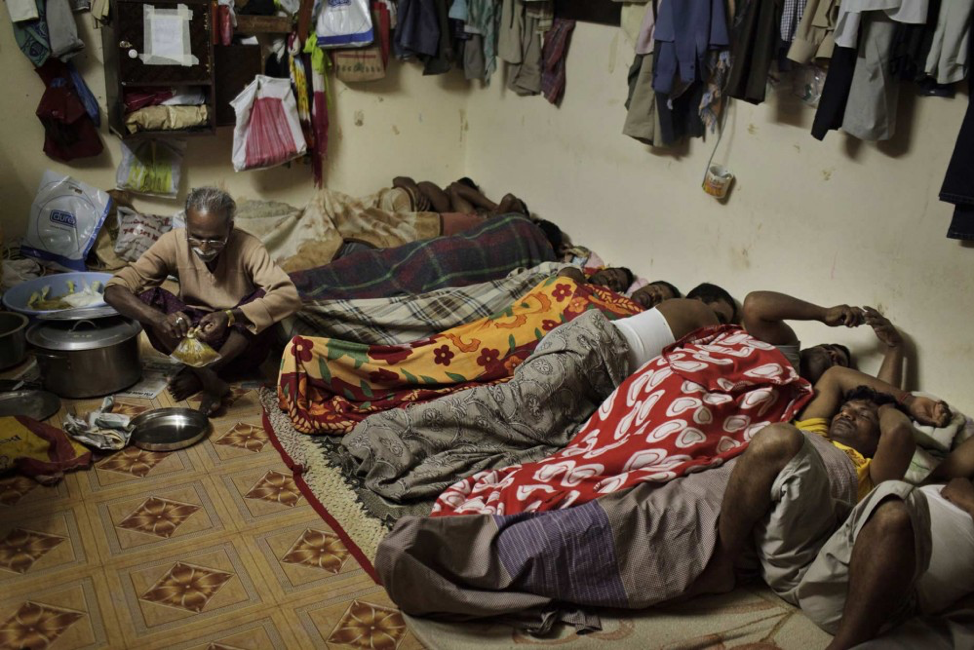
Dubai labor camp. Migrant laborers live in overcrowded labor camps, but if they protest conditions they may be deported without pay or imprisoned.
In the U.S. and Europe aging populations and falling birth rates are shrinking the workforce to inadequate levels for maintaining economic health, according to the Pew Research Center. The primary method of addressing this workforce crisis has been through employing but also stigmatizing laborers as “undocumented,” and therefore undeserving of rights. The system forces workers to live below the radar, scraping together enough money working in restaurants and at construction sites to pay the fees to the traffickers who control the migration routes, and sending the excess home to help feed their children left behind. The mystique we grant the concept of “documents” is what allows many to look at this shadow life as an opportunity for new arrivals rather than a tragedy of exploitation that spans continents. If these arrivals are fleeing poverty and violence, it is in no small part due to the role low wages and poor worker’s rights have played in conditions at home.

Domestic Politics and the Segmented International Labor Market
American and European workers think of laborers with different passports as competition, rather than as allies sharing similar struggles, because they see the nation-state lines, not the class lines, as integral to their identity. The migrant and the distant laborer have become scapegoats for the anger generated by growing inequality and economic insecurity. This is especially evident in recent elections, where virulent nativism is spurred on by demagogues who recognize that appealing to the human preference to identify as winners (holders of a “superior” cultural tradition or a privileged passport) is an effective mobilizing strategy for winning a political office. Conveniently, it also keeps anger away from the private sector and its cozy relationship with the state.
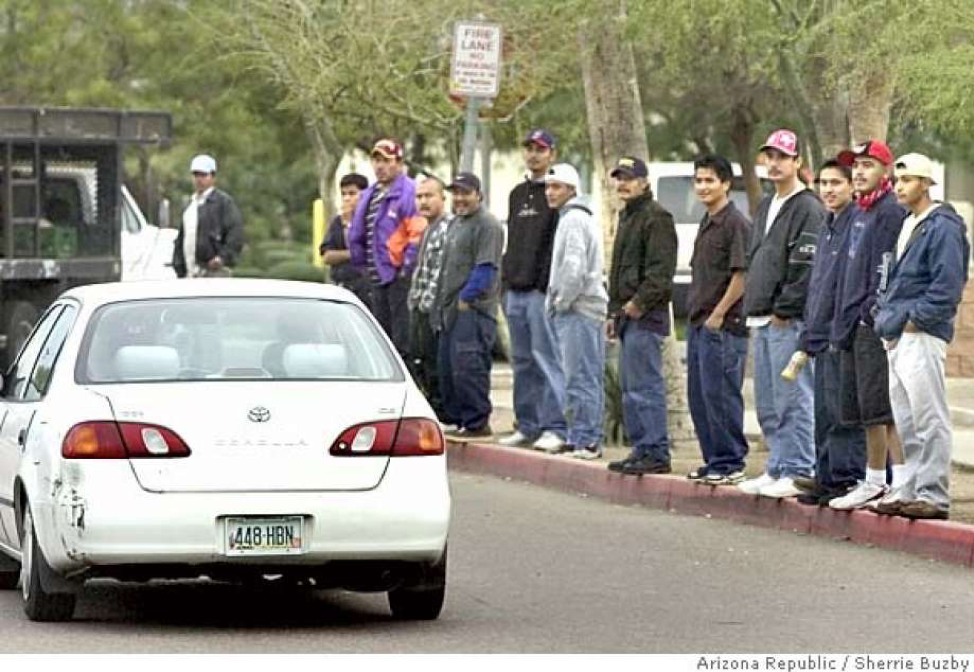
Undocumented laborers hoping for day jobs wait outside a hardware store in Arizona.
Human Movement as Labor Resistance
The global community is facing a crisis as people around the world have taken it into their own hands to challenge the nation-state border regime. This genie isn’t going back in the bottle. The Global North may try to view this massive movement of humans as an “immigration issue” to be regulated. But for those queueing at borders or piling into rubber boats, it is an act of rejection of a system of control that ties their rights to the documents they carry.
This doesn’t mean that people leave behind their homes without tremendous sorrow, or that their movement will provide a path to labor rights, but it does mean they aren’t playing by the rules anymore. Technology has given them the ability to make new paths by sharing information about options and logistics, and this poses a dilemma for those in receiving nations. Will we tolerate the expansion of a two-tier (documented vs. undocumented) system and the accompanying ethno-nationalism that is needed to justify it? Will we employ an apartheid-like contract labor system like that in the Gulf countries to alleviate just enough of the misery to prevent an explosion in sending countries? What kind of world, what kind of country, and what kind of values do we want to live amidst?
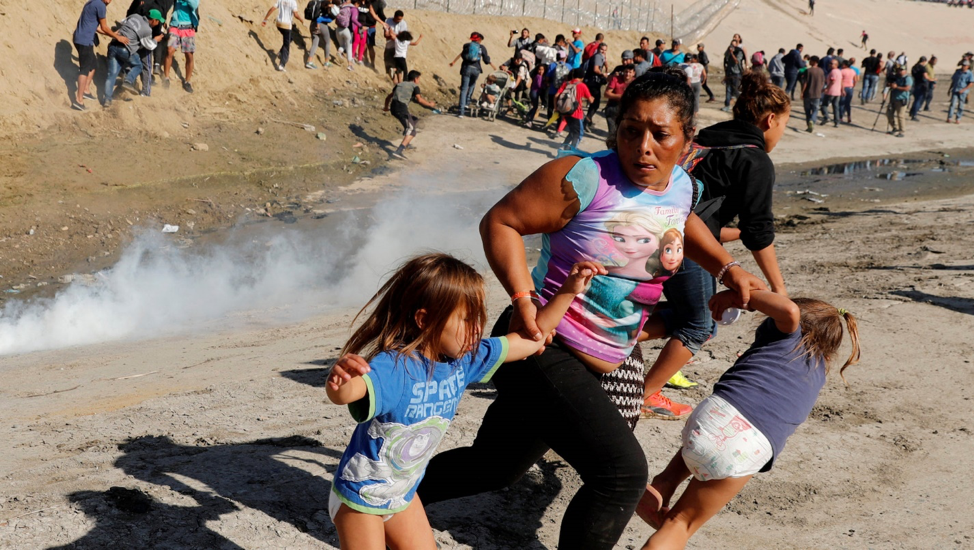
Families being tear-gassed at the U.S.-Mexican Border in November, 2018. What price are we willing to pay for maintaining this global labor regime?
The price of maintaining detachment from the misery of global labor at and within our borders will be paid in many ways. It will be paid by workers in the Global North who are discouraged from allying with global labor by ethno-nationalist ideologies. It will be paid in civic life as communities abandon the vision of collective good and legally enshrine privilege for only certain types of humans. And we will pay the price in our daily efforts to reconcile the injustice we will see as we try not to see it. Just as at the end of race-based slavery, the system is under strain both from the mental contortions required to justify the unjustifiable before one’s eyes, and in the challenges posed by those who refused to abide by the rules of the system that oppressed them.
